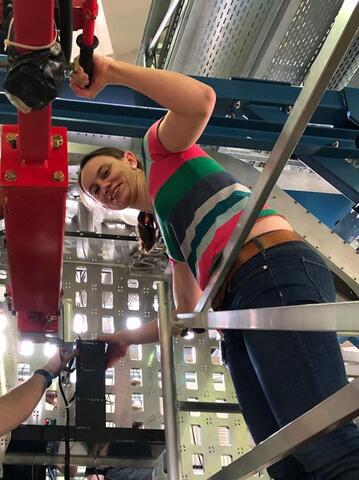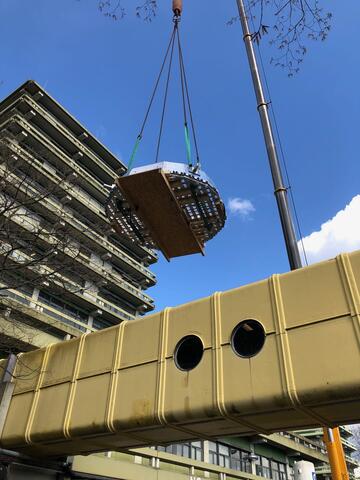Workshop „Physics Opportunities with Proton Beams at SIS100” was held in Wuppertal
PANDA meetings
04/03-08/03 2024 CM 24/1 in Münster
24/06-28/06 2024 CM 24/2 at GSI
25/06-26/06 2024 FEE/DAQ Workshop
04/11-06/11 2024 CM 24/3 at GSI
05/03-07/03 2025 WS at GSI
16/06-20/06 2025 CM 25 in Uppsala
The future international accelerator facility FAIR (Facility for Antiproton and Ion
Research) will host multiple experiments. A focus will be on experiments with antiprotons. The
PANDA (antiProton ANnihilation at DArmstadt) experiment will study the strong interaction in
annihilation reactions between an antiproton beam and a stationary gas jet target.
The PANDA detector consists of different sub-detectors for tracking, particle identification and
calorimetry. The Micro-Vertex Detector (MVD) as the innermost part of the tracking system will
facilitate precise tracking and detection of secondary vertices. The MVD will comprise hybrid
silicon pixel sensors and double-sided silicon strip sensors.
The strip part will contain approximately 200,000 channels that need to be read out using a highly
integrated front-end chip. Therefore, a custom-made ASIC is being developed. The self-triggering
PASTA chip (PAnda STrip Asic) will employ the Time-over-Threshold (ToT) technique to digitize
the hit amplitude and utilize time-to-digital converters (TDC) with analog interpolators to provide a
high-precision time stamp of the hit. A custom-made Module Data Concentrator ASIC (MDC) will
multiplex the data of all front-ends of one double-sided strip sensor towards the CERN-developed
GBT chip set (GigaBit Transceiver). The MicroTCA-based MVD Multiplexer Board (MMB) at
the off-detector site will receive and concentrate the data from the GBT links and transfer it to
FPGA-based compute nodes for global event building that combines all sub-detectors.
Research) will host multiple experiments. A focus will be on experiments with antiprotons. The
PANDA (antiProton ANnihilation at DArmstadt) experiment will study the strong interaction in
annihilation reactions between an antiproton beam and a stationary gas jet target.
The PANDA detector consists of different sub-detectors for tracking, particle identification and
calorimetry. The Micro-Vertex Detector (MVD) as the innermost part of the tracking system will
facilitate precise tracking and detection of secondary vertices. The MVD will comprise hybrid
silicon pixel sensors and double-sided silicon strip sensors.
The strip part will contain approximately 200,000 channels that need to be read out using a highly
integrated front-end chip. Therefore, a custom-made ASIC is being developed. The self-triggering
PASTA chip (PAnda STrip Asic) will employ the Time-over-Threshold (ToT) technique to digitize
the hit amplitude and utilize time-to-digital converters (TDC) with analog interpolators to provide a
high-precision time stamp of the hit. A custom-made Module Data Concentrator ASIC (MDC) will
multiplex the data of all front-ends of one double-sided strip sensor towards the CERN-developed
GBT chip set (GigaBit Transceiver). The MicroTCA-based MVD Multiplexer Board (MMB) at
the off-detector site will receive and concentrate the data from the GBT links and transfer it to
FPGA-based compute nodes for global event building that combines all sub-detectors.





